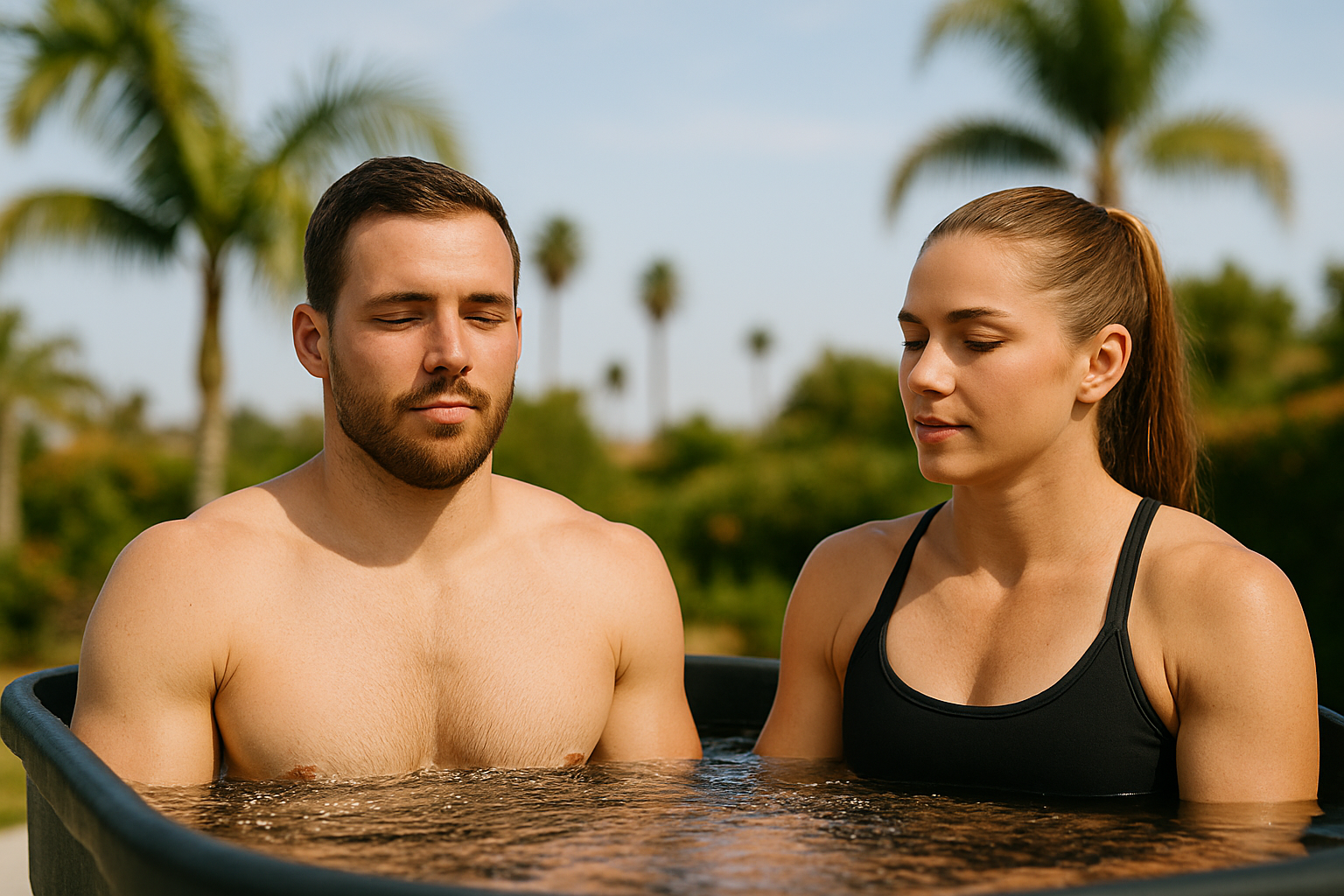Cold Plunge Benefits for Muscle Recovery and Mental Toughness
If you’ve seen athletes taking ice baths, fitness influencers braving freezing tubs, or Wim Hof devotees standing in icy rivers, you might be wondering—what’s the hype with cold plunges? Once reserved for hardcore competitors and extreme wellness seekers, cold plunging has gone mainstream. And it’s not just about getting a rush or making a viral video—there’s real science behind the benefits, especially when it comes to muscle recovery and mental resilience.
In this article, we’ll break down exactly what cold plunges do for your body and brain, and how you can safely add them to your routine—even if you’re just getting started.
What Is a Cold Plunge?
A cold plunge is the practice of immersing your body (usually up to the neck) in cold water—typically around 50°F (10°C) or lower—for a short period, usually between 2 to 10 minutes.
This can be done in a cold plunge tub, an ice bath, a cold lake, or even a converted chest freezer (yes, that’s a thing). The goal? To expose your body to cold temperatures to trigger a series of physiological responses that benefit both physical recovery and mental performance.
Benefits for Muscle Recovery
1. Reduces Inflammation and Muscle Soreness
After intense workouts or training sessions, your muscles experience microscopic damage and inflammation. This is what causes delayed onset muscle soreness (DOMS)—the stiffness and pain you feel 24–72 hours post-workout.
Cold water constricts blood vessels, reducing blood flow to the area and slowing down the inflammatory process. This helps:
Minimize swelling
Reduce pain
Speed up recovery between workouts
Athletes often use cold plunges post-training to bounce back faster, avoid prolonged soreness, and train harder the next day.
2. Flushes Out Metabolic Waste
When you expose your body to cold water, your blood vessels tighten (vasoconstriction). When you exit the cold plunge, they expand again (vasodilation), creating a "flushing" effect.
This process helps:
Remove lactic acid and other byproducts from your muscles
Deliver fresh oxygen and nutrients during rewarming
Support overall muscle repair and recovery
It’s like giving your muscles a mini reset after being put through the wringer.
3. Decreases Exercise-Induced Swelling
In addition to soreness, cold plunging helps reduce post-workout swelling, especially in high-impact sports or heavy resistance training. That’s why it’s so popular among professional athletes, CrossFitters, and runners.
The cold numbs the area temporarily, offering natural pain relief—no pills or topicals required.
Benefits for Mental Toughness
1. Trains Your Brain to Stay Calm Under Stress
Let’s be real—plunging into icy water is uncomfortable. Your body immediately wants to panic, tense up, or get out. But learning to breathe through the discomfort and stay present strengthens your mental resilience.
Each session teaches you how to:
Regulate your nervous system under pressure
Build mental discipline and control over your impulses
Get comfortable being uncomfortable
Over time, this carries into everyday life—helping you stay calm in hard conversations, high-pressure meetings, or during moments of anxiety.
2. Improves Mood and Reduces Stress
Cold plunging triggers a flood of mood-boosting chemicals:
Dopamine: The “motivation molecule” increases significantly post-plunge
Norepinephrine: Increases focus and alertness
Endorphins: Natural painkillers that make you feel good
Some studies suggest cold exposure may reduce symptoms of anxiety and depression, thanks to its ability to activate the vagus nerve and reset the nervous system.
The result? You often feel more energized, focused, and emotionally stable after just a few minutes in the cold.
3. Builds Confidence and Mental Grit
There’s something incredibly empowering about doing something hard—especially first thing in the morning.
By conquering a cold plunge, you:
Start your day with a win
Prove to yourself that you can do hard things
Strengthen your mind-body connection
Whether you’re an athlete, entrepreneur, or simply working on self-discipline, cold plunging is a powerful daily challenge that builds real inner strength.
Additional Cold Plunge Benefits
While muscle recovery and mental toughness are the headline benefits, cold plunging can also help:
Improve sleep by calming the nervous system before bed
Boost immune function through increased white blood cell activity
Enhance metabolism by activating brown fat, which burns calories to keep you warm
Improve skin tone by tightening pores and reducing inflammation
How to Get Started with Cold Plunges
You don’t need a $10,000 spa setup to reap the benefits. Here’s how to ease in safely:
1. Start Slow
Begin with cool showers before working up to full plunges
Start at 60–65°F (15–18°C) for 2–3 minutes
Gradually lower the temperature and increase duration over time
2. Use Proper Technique
Breathe deeply to calm your nervous system (inhale 4 seconds, exhale 6–8)
Keep your hands and feet in if you can—but it’s okay to leave them out early on
Aim for 2–5 minutes, max 10 minutes unless supervised
3. Be Consistent
3–5 times per week is enough to see benefits
Try it post-workout for recovery or first thing in the morning for a mental boost
4. Warm Up Safely After
Let your body reheat naturally with movement (jumping jacks, brisk walk)
Avoid hot showers immediately after—you want your body to regulate its temperature naturally
Safety Notes
Cold plunging isn’t for everyone. Talk to your doctor first if you have:
Cardiovascular conditions
Respiratory issues
Raynaud’s disease
Pregnancy concerns
Always listen to your body. Shivering and discomfort are normal—but if you feel dizzy, numb, or faint, get out immediately and warm up.
The Bottom Line
Cold plunges are more than just a fitness trend—they’re a time-tested practice that supports both physical recovery and mental resilience. Whether you're pushing your limits in the gym or just looking to get a grip on stress and discomfort, the cold can be your ally.
A few minutes a day in icy water might seem crazy—but it could be the hardest thing you do, and the best thing you do for your body and mind. Ready to take the plunge?

